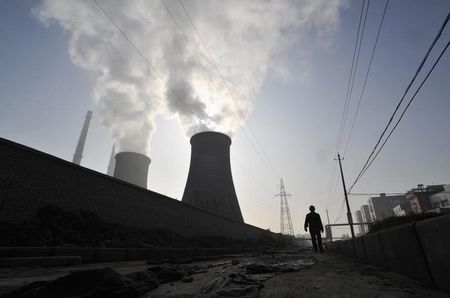
Investing.com — Macquarie has initiated coverage on the Australian carbon market, focusing on how it works and its role in Australia’s efforts to cut emissions.
As Australia aims to meet its goals under the Paris Agreement, the carbon market, especially through the Safeguard Mechanism, is crucial for reducing industrial emissions.
The Australian carbon market, operating under the Safeguard Mechanism, currently covers approximately 140 million tonnes of greenhouse gas emissions annually, which consists about 28% of Australia’s total emissions.
This market mainly covers high-emission industries like mining and oil and gas extraction.
These sectors need to follow strict rules by reducing their emissions using Australian Carbon Credit Units (ACCUs) or Safeguard Mechanism Credits (SMCs), which are the key tools for meeting these regulations.
The market functions as a hybrid system, blending compliance with voluntary carbon offsetting mechanisms. Facilities are only required to offset emissions that exceed specific baselines, which are tied to their production levels and carbon intensity.
This flexibility allows companies to adjust their operations in a way that minimizes compliance costs while meeting their obligations. Non-compliance can result in severe penalties, up to A$250 per tonne, ensuring that companies adhere to the offsetting requirements.
“We see the scheme staring to tighten in 2026FY (running from June-25 to June-26) with a huge supply and demand gap opening up in 2027FY,” the analysts said.
A supply-demand gap is expected to open in FY 2027, largely due to the Safeguard Mechanism’s baseline reductions, combined with the addition of new, high-emission facilities, such as gas and coking coal plants.
These new entrants face stricter compliance obligations, which will drive demand for ACCUs. Macquarie forecasts that compliance demand for ACCUs will rise dramatically from 6.4 million tonnes in FY 2024 to 38 million tonnes by FY 2030.
Despite this optimistic outlook, the market is currently oversupplied. At present, approximately 41 million ACCUs are in circulation—more than three times the total annual demand in 2024.
However, as compliance obligations become stricter, and as baseline reductions accelerate, this surplus is expected to diminish, tightening the market over the coming years.
ACCUs are projected to increase in value as demand outpaces supply. Macquarie estimates that prices will converge around A$55 per tonne in the long term.
This price point reflects the marginal cost necessary to bring new carbon offset projects online, particularly in the areas of vegetation and agricultural methods, which will be crucial in meeting future supply shortfalls.
The forecasted price increase is grounded in the belief that tightening market conditions will incentivize the development of new projects.
As supply diminishes and compliance obligations become more stringent, the price of carbon credits will rise to a level that stimulates the necessary investment in new carbon sequestration initiatives.
Although the market outlook is mostly positive, Macquarie analysts have noted some risks. One concern is a possible oversupply of ACCUs due to a recent increase in project registrations.
If new projects keep coming in at the current pace, there might be too many ACCUs available, which could slow down price increases and delay the expected market tightening. A similar situation happened in New Zealand, where too many forestry offsets led to an oversupply in the carbon market.
Macquarie analysts expect a regulatory event in 2025 when Australia is set to submit its 2035 climate targets to the United Nations Framework Convention on Climate Change (UNFCCC).
This could lead to stricter compliance rules, affecting the carbon market. Additionally, the new Integrated Farm and Land Management (IFLM) program is expected to launch by FY 2026.
This program will include soil and vegetation-based sequestration projects, broadening the range of carbon offset methods available in the market.
This post is originally published on INVESTING.



